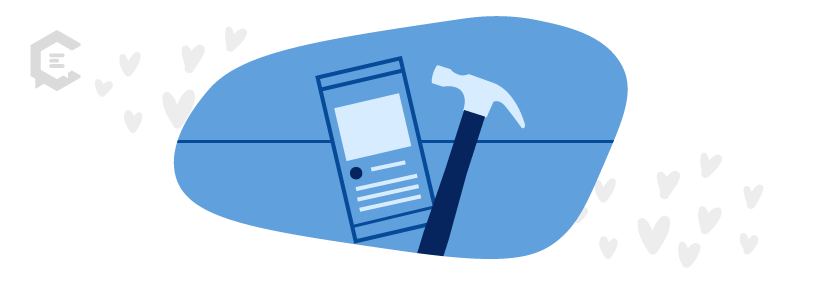When the trend of social media influencers began to take off, there was a particular type of influencer popular across social media platforms. However, today there are influencers of all backgrounds helping companies reach a wider audience and grow their brand.
Developing a complete understanding of influencers and their use in marketing can help us understand the best way to use their skills and talents to make your next marketing campaign a success.
If you’ve never explored this type of marketing program, now is definitely the right time. The market is currently experiencing an explosion of growth, expanding from $1.6 million in value in 2016 to a projected $13.8 billion by this year. Instagram alone has over 500,000 active influencers and is one of the most effective platforms to use, with campaign posts found to be 78% effective and campaign stories 73% effective.
This expansion and growth are primarily due to the recent democratization of influencer marketing. In the past, this type of marketing was less accessible to smaller brands because they simply couldn’t afford to work with popular influencers that dominated the landscape in the early 2010s. However, the growth of micro and nano influencers has made it easier for start-ups and smaller companies to take advantage of this form of marketing, leading to broader utilization of this technique across the board.
The more you know about influencer marketing, the easier it will be to develop a campaign that helps you achieve growth and sales goals and leads to better overall brand awareness.
The history of influencer marketing
Even though most people assume that influencers didn’t exist before the rise of social media ubiquity, the truth is some form of influencer marketing has been utilized for centuries.
Some of the first influencers were royal families from around the world, whose outfits, habits, hobbies, and even food preferences inspired legions of copycats. Soon, companies intentionally began to take advantage of this, starting with brands like Wedgewood, which marketed a tea set in 1760 that was stamped with ‘Royal’ approval.
Between 1760 and today, there are many figures that can be considered advertising influencers, ranging from the beautiful Coco Chanel to the fictional Santa Claus. However, the rise of the internet and blogging in the early 2000s led to the popularity of ‘mommy blogs’ with authors who began endorsing products, blurring the line between advertising and editorial content.
What is influencer marketing?
Most people agree that what we now know of as influencer marketing started to become solidified around 2010, coinciding with the rise of social media. Some of the first influencers were public figures. Mostly individuals with some celebrity status who were willing to work with brands to sell their products. Since these figures had such substantial social media followings, there was already a captive audience primed to pay attention to whatever this person posted.
While this strategy was effective for many brands, working with these celebrities and public figures was not always possible, especially for companies without a large marketing budget. As social media use became more widespread, individuals with much smaller social media followings began to be considered influencers.
Now, strategists have separated social media influencers into four different categories:
- Mega influencer: Typically, a well-known celebrity or public figure with at least 1 million followers on any given platform.
- Macro influencer: This is a well-known individual with a social media audience of between 100,000 to up to 1 million followers, spanning many different demographic groups.
- Micro influencer: This type of influencer usually has between 10,000 and 100,000 followers. Micro-influencers tend to focus on a specific niche. Since they speak to a much more specific audience, they tend to have a higher overall engagement rate.
- Nano influencer: A nano influencer is an individual with a social media following of fewer than 1,000 followers. Despite their niche category, a nano influencer’s engagement is typically the best because of the close relationship they can cultivate and maintain with their followers.
Whether you work with mega or nano influencers on Instagram, TikTok, or fast-growing new platforms like Snapchat, any act of partnership with one of these individuals can be considered influencer marketing.
Why choose an influencer marketing strategy?
There are so many reasons to engage with Snapchat, TikTok, or Instagram influencers. Here are some fundamental reasons why this marketing strategy has become so popular recently.
- Influencers are ubiquitous, making it easy to get your message out there. 61% of social media users say they interact with an influencer at least once a day. A further 35% interact with influencers multiple times a day.
- Not only are influencers everywhere, but they’re already plugged into the network of consumers you want to target. All you have to do is determine the right platform and influencer and let them use their expertise to reach your target market.
- Most people who follow influencers already trust them. Influencer engagement rates across industry verticals are roughly 5.7%, while brands usually see just 2-3% engagement.
- No one likes ads. Influencers on TikTok or Instagram sell products in a much more subtle way, enticing the customer to make a purchase instead of going out of their way to avoid the sales pitch.
- 71% of marketing professionals say that influencers provide higher quality leads than other lead generation methods.
How to build an influencer marketing strategy in 2022
Marketers looking to work with influencers must be aware of the history of influencer marketing and have a thorough understanding of current and future trends. For example, brands that are unable to successfully identify which social platforms are most appealing to their chosen audience will likely find themselves putting work into a campaign that simply falls flat.
Here are some recent trends and tips that may impact your influencer marketing campaign in 2022 and beyond.
Understand platform demographics
A recent study from Pew Research delved into the demographics behind each social media platform.
In general, they found that Instagram, TikTok, and Snapchat were most popular with users under 30. Platforms like YouTube and Facebook were used by large percentages of each age group from 18 to 65+. Companies looking to target a specific age group would do well to develop a thorough understanding of how that demographic uses social media so that they can choose their platforms accordingly.
Identify your audience
While brands working with mega or macro-influencers may have a bit more leeway, companies working with more niche influencers must be absolutely clear about their desired audience. Working with the wrong influencer (as we’ve seen in campaigns like Kendall Jenner’s Pepsi commercial) can not only stifle your growth and sales goals but lead to ridicule and a loss of public trust.
Be clear about your goals
Choosing the right influencer is more straightforward if your goals are well-defined. Then, once they’re on board, having clear goals makes it simpler for them to provide services to match.
Ensure transparency
One of the reasons why social media influencer marketing is so popular is because of these figures’ perceived trustworthiness. Content that is not authentic or feels too ‘salesy’ can lead to an influencer losing their audience’s trust. This is true of all demographic groups but is particularly evident among Gen Z customers, who are the most likely to abandon a brand that doesn’t share their values.
The best content is created when brands and influencers can work together to understand the campaign’s goals. Then, the influencer can craft a strong and engaging message that resonates with their audience.
Try micro or nano influencers
The rising popularity of micro and nano influencers has made influencer marketing much more accessible. Their high engagement rates and strong connections with their followers make them compelling partners for a like-minded brand. Plus, working with these influencers is generally more cost-effective. While influencer rates vary depending on their audience size and overall engagement numbers, expect to spend anywhere from $10 to $500 per post on Instagram or $5 to $125 per post from a TikTok influencer.
Get started with influencer marketing on ClearVoice
Influencer marketing has never been more accessible. Businesses can partner with like-minded influencers to build brand awareness, boost sales goals, and spur company growth. All it takes is the right partnership.
Whether you’re looking to better understand new and emerging niches or are searching for more tips on crafting a thoughtful, high-performance campaign, the team at ClearVoice has you covered.
Reach out to us today to learn how we can help you develop an influencer campaign for your brand that gets results.






